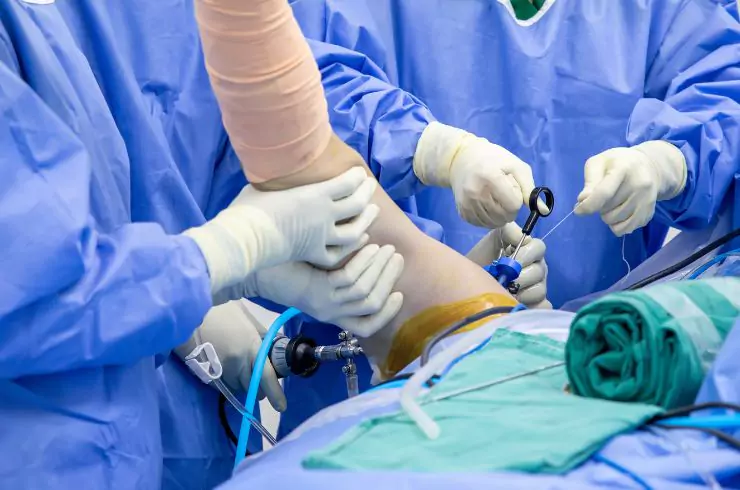Reverse Shoulder Replacement Surgery
- Home
- Reverse Shoulder Replacement Surgery

Reverse Shoulder Replacement Surgery is an advanced orthopedic procedure designed to restore shoulder function and relieve pain in patients with severe shoulder joint damage, especially when the rotator cuff tendons are torn or non-functional. In this surgery, the natural anatomy of the shoulder is reversed — a metal ball is placed on the shoulder blade (scapula), and a plastic socket is placed on the upper arm bone (humerus). This change allows the deltoid muscle to power shoulder movement instead of the damaged rotator cuff.
Who Needs Reverse Shoulder Replacement?
This surgery is especially beneficial for patients with:
Cuff Tear Arthropathy (arthritis caused by long-standing rotator cuff tear)
Massive Irreparable Rotator Cuff Tears
Failed Previous Shoulder Surgery
Severe Shoulder Fractures (especially in elderly patients)
Complex Shoulder Arthritis
Shoulder Instability in Older Adults
Patients often present with chronic pain, weakness, reduced range of motion, or inability to lift the arm. Conventional shoulder replacement isn’t effective in such cases because it relies on a functioning rotator cuff.
How the Procedure Works
Performed under general or regional anesthesia, the surgery typically takes 2 to 3 hours:
An incision is made over the shoulder to access the joint.
Damaged bone and cartilage are removed.
A metal ball (glenosphere) is attached to the shoulder blade.
A socket (humeral cup) is placed at the top of the upper arm bone.
The reversed structure provides new mechanics for lifting and rotating the arm using the deltoid muscle.
Patients generally stay in the hospital for 1–3 days after the procedure.
Benefits of Reverse Shoulder Replacement
Relieves chronic shoulder pain
Improves range of motion and strength
Restores the ability to perform daily activities
Reduces risk of shoulder dislocation in rotator cuff-deficient shoulders
High success and satisfaction rate, even in complex cases
Post-Surgery Recovery
Recovery is progressive and guided by a structured rehabilitation plan:
A sling is worn for 4–6 weeks to protect the shoulder.
Physical therapy starts early with gentle, passive movements.
Active exercises and strengthening begin after healing progresses.
Most patients experience significant improvement within 3–6 months.
Full recovery may take up to a year.
Strict adherence to post-operative instructions and physiotherapy greatly influences long-term outcomes.
Potential Risks and Complications
As with any major surgery, risks include:
Infection
Implant dislocation or loosening
Nerve injury
Stiffness or reduced motion
Blood clots
These complications are rare when performed by experienced orthopedic surgeons under proper surgical protocols.
Is Reverse Shoulder Replacement Right for You?
If you have a painful shoulder, limited movement, and an irreparable rotator cuff tear, reverse shoulder replacement may be the ideal solution. A thorough assessment with X-rays or MRI, physical examination, and medical history review is essential for determining suitability.
Treatments
Need Expert Orthopaedic Care?
Schedule a personalized consultation with Dr Abhishek Gupta and take the first step toward pain-free mobility and a healthier, active lifestyle.
